Mobile Museum
July – August 2013
MOBILE MUSEUM
Nevada was one of the first states to bring its rich history to children and adults alike.
BY PETER BARTON

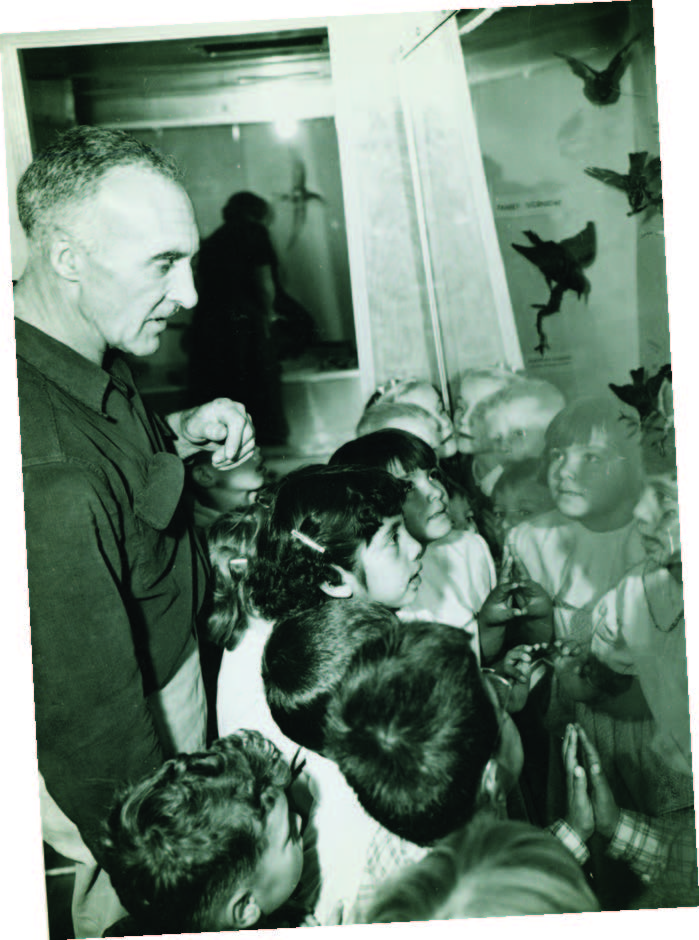
In 1953, Judge Clark J. Guild, founder of the Nevada State Museum, along with James W. Calhoun, recognized that the state’s wide-open spaces prevented many Nevada schoolchildren from visiting the museum in Carson City. The men sought a way to take the rich and countless stories of Nevada’s cultural and natural heritage to the children and the people of the Silver State. Their solution was, like Nevada, pioneering.
The Nevada State Museum opened in the historic Carson City U.S. Mint building on Nevada Day (October 31), 1941. In 1949, Guild hired Calhoun to work at the museum. Two years later, Calhoun became director, a position he would hold until his retirement in 1973. Calhoun’s wife, Thelma, was one of the museum’s first docents.
The Vision
Having attended national museum conferences, the Calhouns had seen small vans outfitted by various museums to visit schools in large cities. That was the inspiration for the notion to create a true traveling museum that would be fitted with exhibit cases, artifacts, and label text. The mobile unit would travel to Nevada’s schools and appear at state and county fairs.
Calhoun approached Guild with the concept. The judge immediately embraced the plan and spent the summer of 1953 engaged in an intensive campaign writing letters, appearing at service clubs, and generally appealing for funds to make the mobile museum a reality. In the meantime, Calhoun consulted with trailer manufacturers, took measurements, and drew up plans for exhibit cases.
With generous funding coming primarily from the Fleischmann Foundation, the go-ahead was given to purchase a 35- foot trailer from Columbia, a trailer manufacturer in Los Angeles. The trailer was taken off the assembly line, specially fitted with exhibit cases, painted blue and silver, and delivered to Carson City, where the museum’s newly acquired station wagon was fitted with a trailer hitch to tow it.
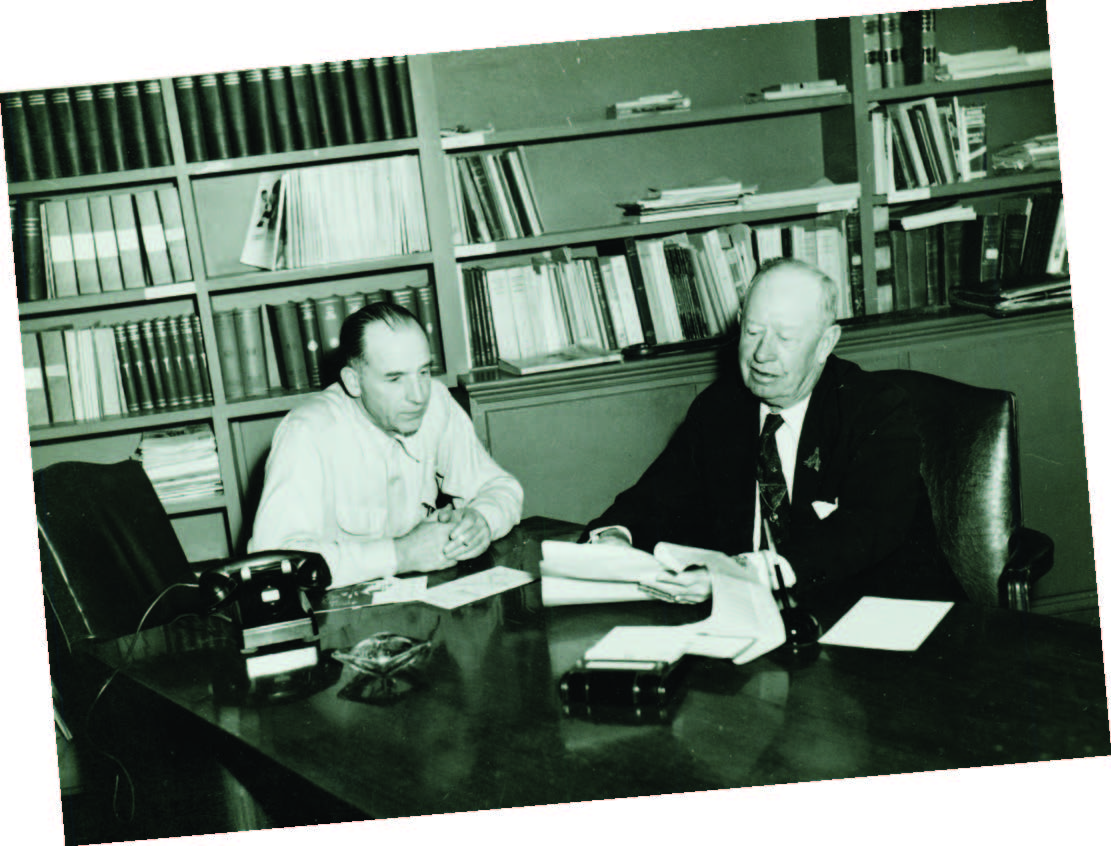
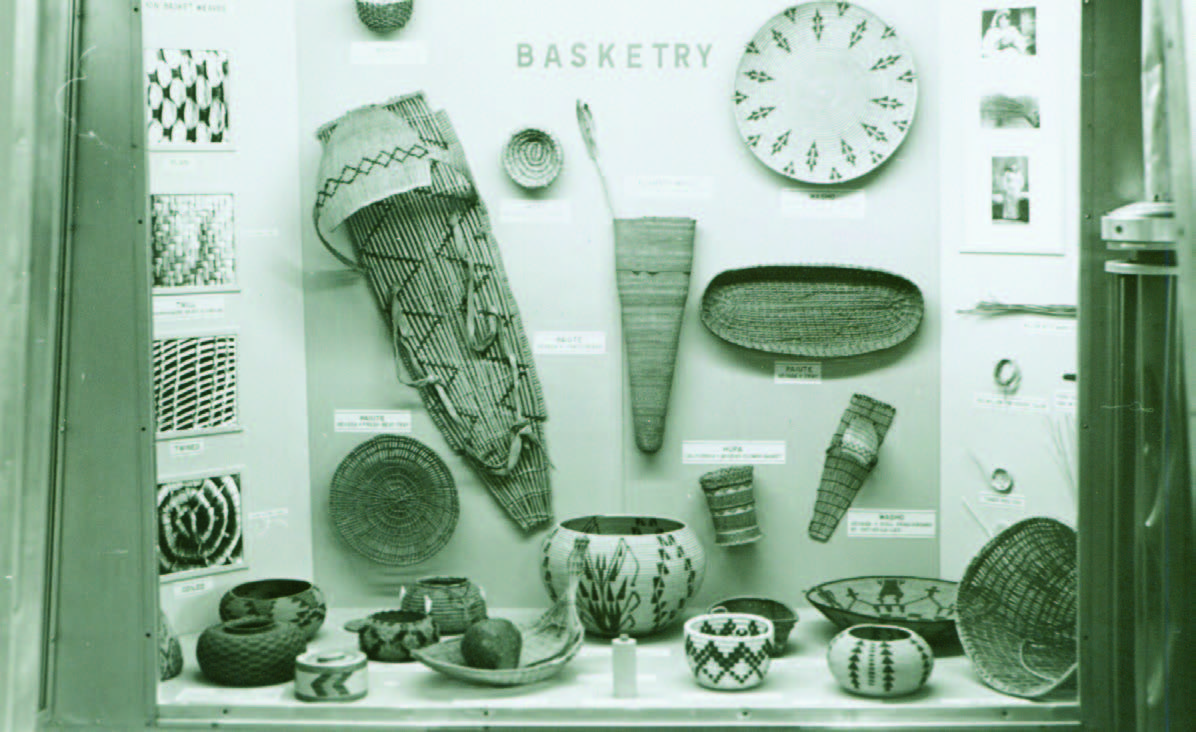
A Museum on Wheels is Born
The mobile museum launched at the Washoe County Fair in summer 1954. The inaugural exhibits featured specimens of Nevada’s natural history—birds and mammals along with archeological objects. Guild, accompanied by docent Nancy Bowers, played host. Large crowds flocked to experience this innovative mobile museum, one of the first in the nation. Bolstered with this early success, Calhoun was next faced with finding someone who would serve as docent and driver, willing to be away from Carson City for extended periods of time.
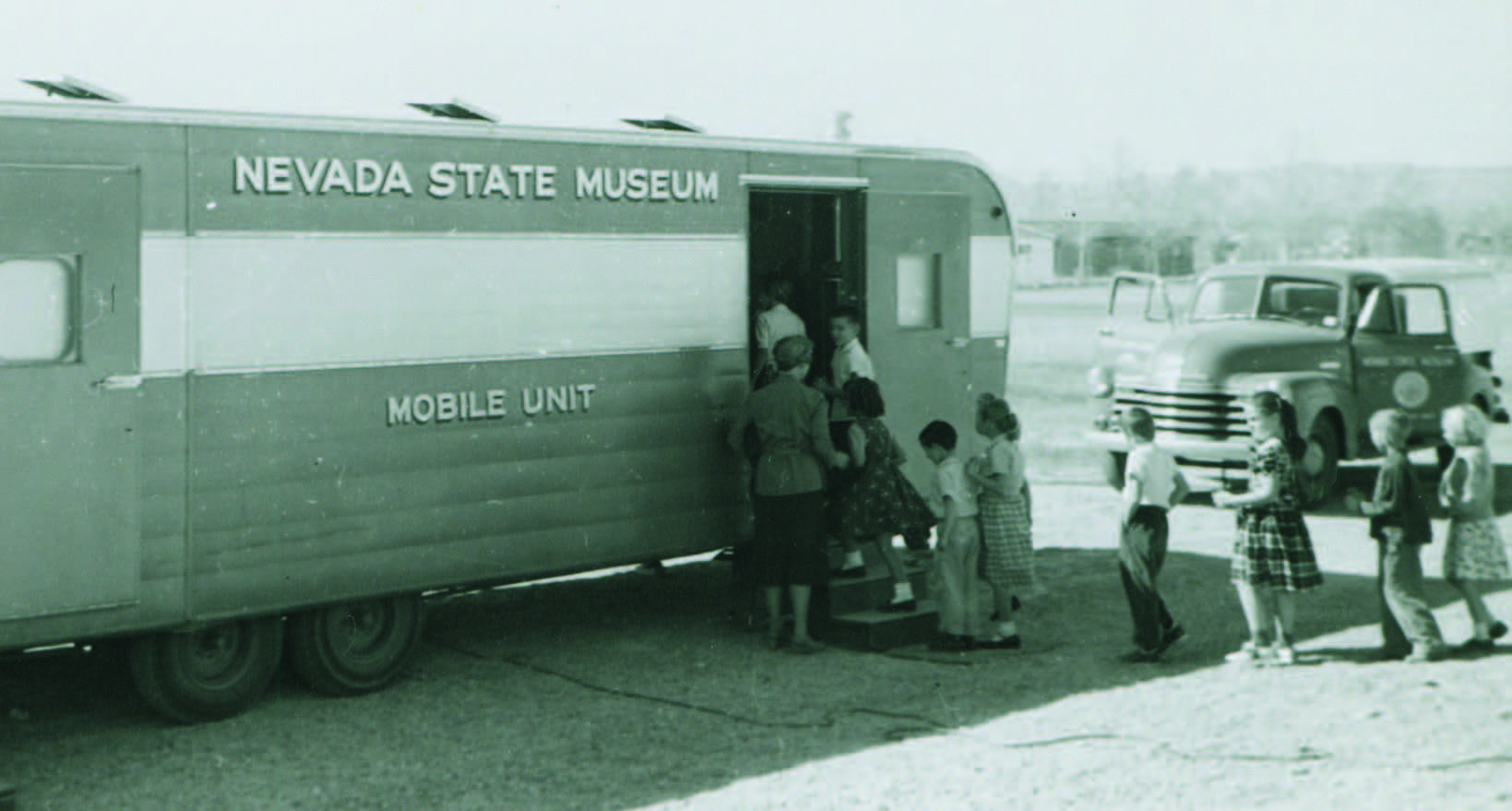
Mike Shaughnessy, an employee of the Nevada State Museum, was given the task of making a trial run with the mobile museum to schools in Reno. Being well received there, the museum hired Peter Herlan, a biologist, to tour as the first driver/docent. In 1954-55, the first year of operation, the mobile unit made stops at all of Nevada’s 98 schools and hosted more than 33,000 students.
As became customary, the mobile unit would return to Carson City in late spring of each year for maintenance and re-fitting with new exhibits. As Guild noted in his oral history published in 1967, “Nothing is the same in the year following.” As each new exhibit was planned and prepared, the museum curators published a guide for teachers and students.
For the third year of operation, 1956-57, the mobile unit featured exhibits on Nevada’s native peoples; ’57-’58 featured Nevada mammals with the goal to “instill a visual picture of the need for conservation of wildlife,” followed by birds of Nevada in the next tour.
Various museum reports over the years note the popularity of birds as a preferred subject. Thus, in 1962-63, birds of Nevada were featured, as was an exhibit on egg comparisons. Included were the huge eggs of the cassowary, ostrich, and emu.
The Mobile Museum Evolves
By 1960, Nevada’s population had grown to surpass 285,000, and the number of schools stood at more than 225. It was no longer logistically possible for the mobile museum to visit all the state’s schools on an annual basis. Beginning that year, the mobile unit would alternate between touring northern and southern Nevada schools, while the museum considered acquiring a second mobile unit. About this same time the museum replaced the aging station wagon with a pickup truck.
The seventh tour (’60-’61) featured exhibits related to fossils, landforms, and the discovery of oil in central Nevada. The ’62-’63 tour commenced in August in Ely with an appearance at the Nevada Fair of Industry, followed by a visit to the Washoe County Fair in September. A new curator of geology, George Wilson, was assigned the duty of mobile unit docent/driver.
On completing nine years of touring in mid-1963, the museum compiled statistics to show that since inception the mobile museum had traveled 32,671 miles, been seen by 412,689 schoolchildren,
and visited 1,359 schools, without any cost to the taxpayer. With Nevada about to celebrate its Centennial in 1964, the museum went to work on developing more extensive exhibits for the tenth tour to launch in the ’63-’64 school year. Titled “Historic Nevada,” the museum modified its plan to spend that year in the southern part of the state and instead planned to visit most communities across Nevada as the museum’s contribution to the “big birthday party.” The following excerpt from the exhibit guide for the Centennial tour gives insight into how this was accomplished:
We are able to touch only briefly on varied phases of Nevada’s development in our limited display area, but we hope in these brief glimpses to excite an interest and curiosity that will inspire further study.
The exhibits focused on immigration and settlement, Nevada Governors, the Nevada Legislature, mining, Chinese in Nevada, ranching, lumbering, the Pony Express, and a broader study of transportation.
The ’67-’68 tour would be the last as continued rapid growth across Nevada, combined with increased difficulty finding staff willing to be away from home for extended periods, led to the difficult decision to retire the mobile museum at the conclusion of the 1968 school year. In its stead, the Nevada State Museum developed a program of loaned exhibit cases and artifacts, which were shipped to schools around the state.
The End of An Era
By the end of the Nevada State Museum Mobile Unit era, it had accumulated more than 50,000 miles along the roads and back roads of Nevada and had been visited by more than 450,000 schoolchildren and adults—virtually the entire population of Nevada at the time. Its operation was entirely through donated funds. The program was truly innovative.
As noted in the Nevada State Museum Biennial report of 1954, “As but few museums have such a service extending museum facilities, the trustees and staff are very proud that the Nevada State Museum can thus be taken to the people of the State, many of whom are separated from Carson City by great distance.”
Guild knew the value of museums to education and embarked on finding a way to make the museum relevant in the classroom. As Guild noted in his oral history, “The mobile unit traveling to the schools of Nevada has taken its place in the Nevada school system and is acclaimed by the educators as a valuable teaching adjunct.” Guild and Calhoun changed the face of museum education and its delivery in ways still being felt today.
LOOKING BACK
With an education system as rich in history as the state itself, some schools across Nevada have survived through the decades. As for the fate of a few, only photographs and rubble remain. Interestingly, all three photographs below were taken in 1939.\
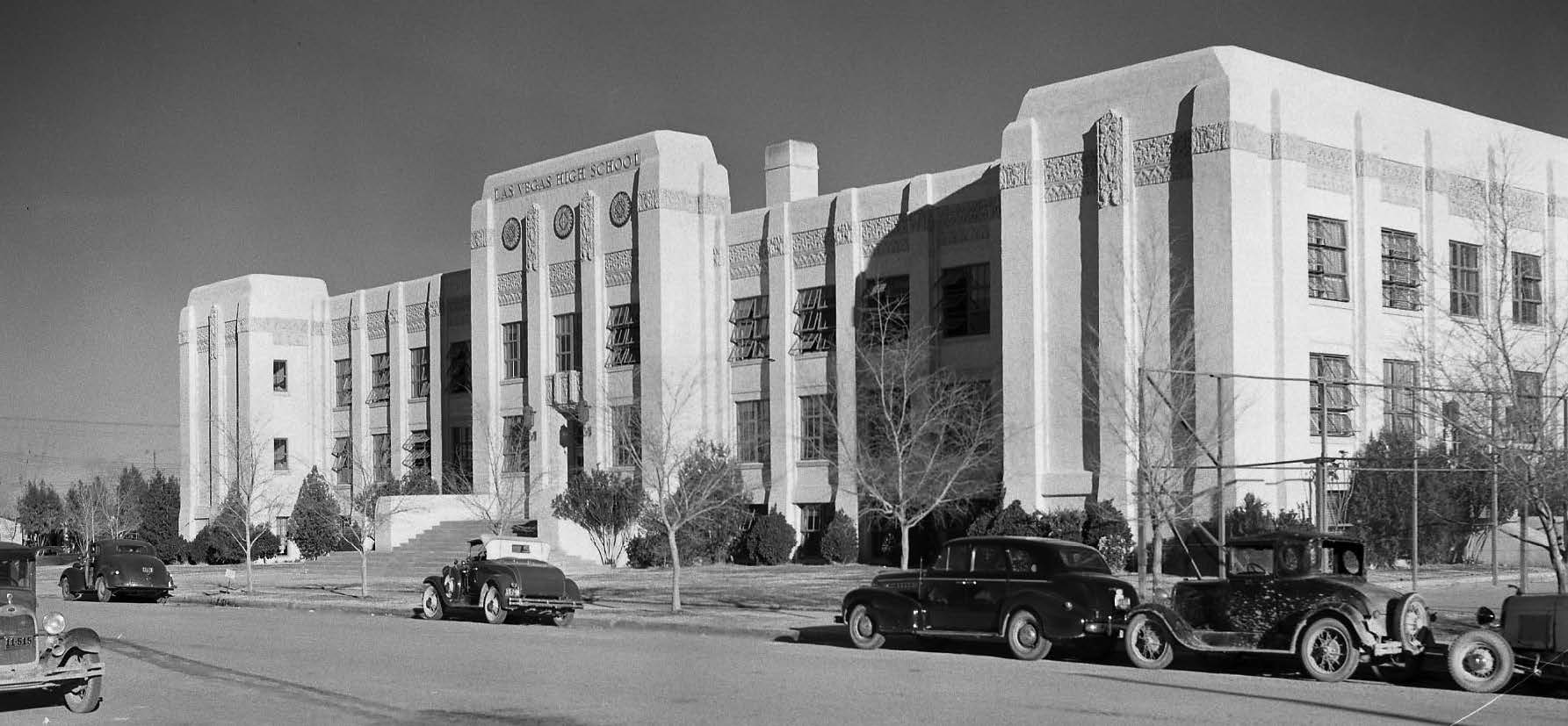
Schoolhouse Memories
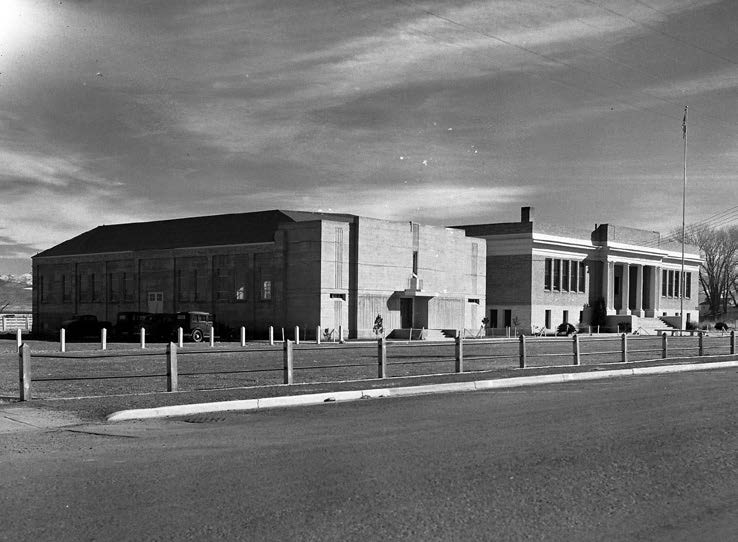
When Las Vegas High School opened in 1931, it was among the few Art Deco-style buildings erected in the city at that time. Built on the then-outskirts of Las Vegas, the school took criticism for being too far of a commute for many students, and in the late 1980s a new campus was built in a more desirable location. Today the building is home to the Las Vegas Academy, founded in 1993. The original campus has since been added to the National Register of Historic Places.
C. Lewis Wilson of Monrovia, California was the original architect of the Fallon High School, built in 1917 and opened in 1918. According to the Churchill County Museum, the school underwent a major renovation in 1922. Later additions—including a science wing in 1966—changed the school significantly. The building is now used for the Churchill County School District’s administrative services.
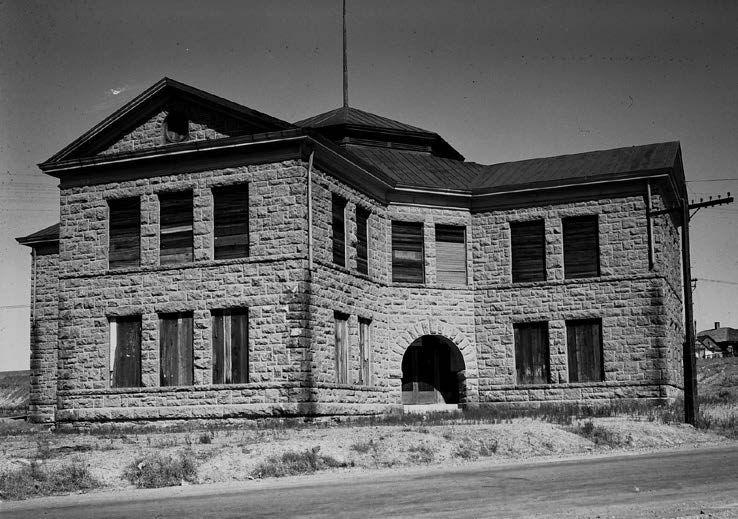
While Sundog Elementary School in Goldfield no longer stands, its stones now line the Nevada Department of Transportation building in neighboring Tonopah. One stone, however, never made it to Tonopah. The school was completed in 1908, minus one stone. An article in the Pahrump Valley Gazette tells a tale of the death of a young girl named Joy and her mother’s theft of the rock to be used as a headstone. Joy’s mother carved her daughter’s name into the stone, which resided in Goldfield for many years. Eventually it succumbed to the elements. A new headstone has replaced the former and still reads, “JOY.”


